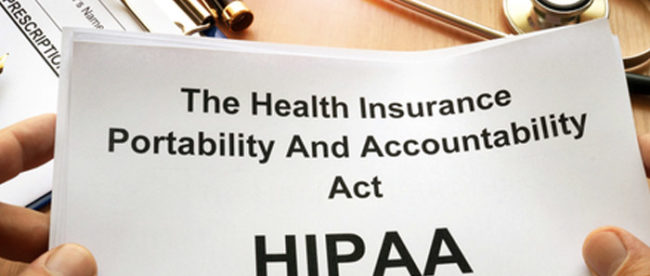Pacific Prime Can Be Fun For Anyone
Pacific Prime Can Be Fun For Anyone
Blog Article
A Biased View of Pacific Prime
Table of ContentsThe Main Principles Of Pacific Prime The Ultimate Guide To Pacific PrimeAn Unbiased View of Pacific PrimeSome Known Facts About Pacific Prime.Pacific Prime for Dummies

This is because the information were accumulated for a period of solid economic performance. Of the approximated 42 million individuals that were without insurance, almost regarding 420,000 (about 1 percent) were under 65 years of age, the age at which most Americans end up being qualified for Medicare; 32 million were adults between ages 18 and 65, around 19 percent of all grownups in this age; and 10 million were kids under 18 years old, concerning 13.9 percent of all kids (Mills, 2000).
These quotes of the variety of individuals without insurance are created from the yearly March Supplement to the Existing Populace Survey (CPS), carried out by the Demographics Bureau. Unless or else noted, national estimates of individuals without health and wellness insurance and percentages of the population with different kinds of insurance coverage are based upon the CPS, one of the most widely utilized source of quotes of insurance policy protection and uninsurance prices.
The 25-Second Trick For Pacific Prime

Still, the CPS is especially valuable due to the fact that it creates annual quotes relatively rapidly, reporting the previous year's insurance policy protection approximates each September, and since it is the basis for a consistent collection of quotes for greater than twenty years, allowing for evaluation of patterns in protection gradually. For these reasons, as well as the considerable use the CPS in other studies of insurance policy coverage that are offered in this report, we rely upon CPS estimates, with limitations kept in mind.

The quote of the variety of uninsured individuals expands when a population's insurance condition is tracked for several years. Over a three-year period starting early in 1993, 72 million people, 29 percent of the united state populace, were without protection for a minimum of one month. Within a solitary year (1994 ), 53 million individuals experienced at least a month without insurance coverage (Bennefield, 1998a)
Six out of every ten without insurance grownups are themselves employed. Although functioning does enhance the probability that one and one's member of the family will certainly have insurance coverage, it is not a guarantee. Also members of households with 2 permanent wage income earners have practically a one-in-ten opportunity of being without insurance (9.1 percent uninsured rate) (Hoffman and Pohl, 2000).
8 Easy Facts About Pacific Prime Shown
New immigrants represent a considerable percentage of individuals without medical insurance. One analysis has attributed a substantial part of the current growth in the size of the U.S. uninsured population to immigrants who showed up in the nation in between 1994 and 1998 (Camarota and Edwards, 2000). Current immigrants (those that came to the United States within the past four years) do have a high rate of being uninsured (46 percent), but they and their kids represent simply 6 percent of those without insurance policy nationally (Holahan et al., 2001).
The relationship between wellness insurance policy and accessibility to care is well developed, as documented later on in this phase. Although the relationship in between health and wellness insurance and health and wellness results is neither direct nor easy, a considerable clinical and health solutions study literary works web links health and wellness insurance coverage to improved accessibility to care, far better high quality, and enhanced personal and populace health and wellness condition.
Levels of analysis for examining the impacts of uninsurance. It focuses particularly on those without any kind of wellness insurance for any kind of length of time.
Some Known Factual Statements About Pacific Prime
The troubles encountered by the underinsured remain in some areas comparable to those dealt with by the without insurance, although they are normally less serious. group insurance plans. Uninsurance and underinsurance, however, entail noticeably various policy concerns, and the approaches for resolving them might differ. Throughout this study and the five records to adhere to, the major emphasis is on persons without medical insurance and therefore no assistance in spending for wellness treatment beyond what is available via charity and safeguard organizations
Health and wellness insurance coverage is a powerful variable impacting receipt of treatment due to the fact that both clients and physicians react to the out-of-pocket cost of services - https://pacificpr1me.edublogs.org/2024/04/02/pacific-prime-your-one-stop-shop-for-insurance-solutions/. Medical insurance, nevertheless, is neither required nor adequate to acquire access to clinical services. The independent and straight impact of health insurance coverage on accessibility to health and wellness services is well developed.
Others will certainly acquire the health treatment they need also without medical insurance, by spending for it expense or seeking it from service providers that provide treatment complimentary or Learn More Here at highly subsidized prices. For still others, health insurance coverage alone does not ensure receipt of care due to various other nonfinancial obstacles, such as a lack of wellness care providers in their neighborhood, minimal access to transport, illiteracy, or linguistic and cultural distinctions.
Get This Report on Pacific Prime
Official study about uninsured populations in the United States dates to the late 1920s and early 1930s when the Board on the Price of Healthcare generated a series of reports about financing doctor office visits and hospital stays. This concern ended up being prominent as the numbers of medically indigent climbed during the Great Anxiety.
Report this page